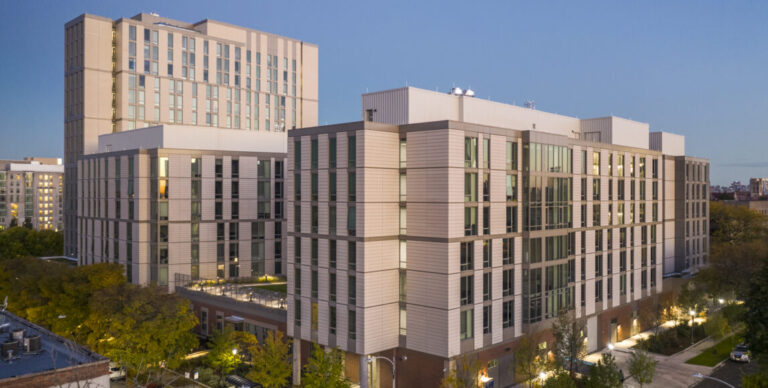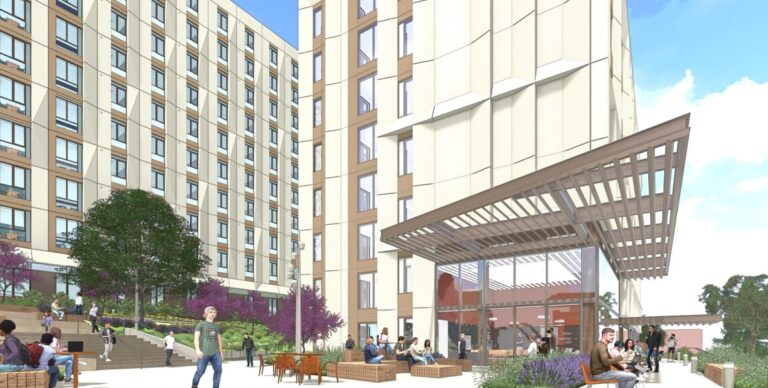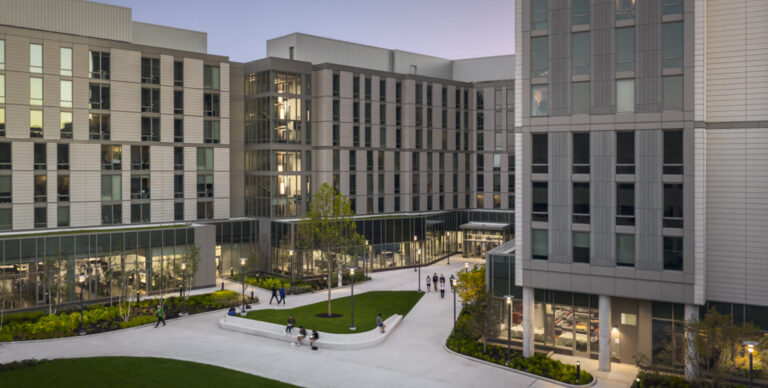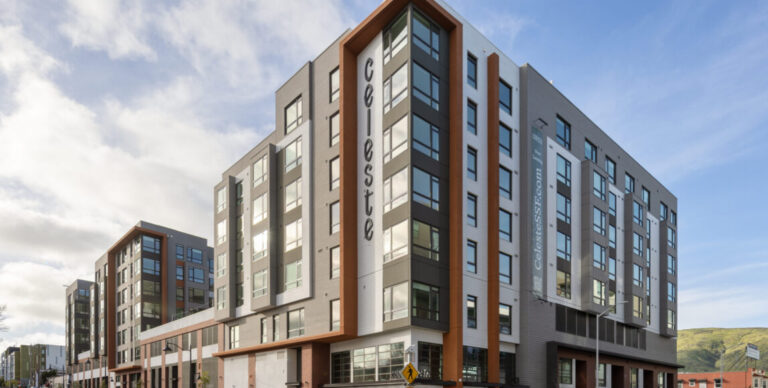The 7 Phases of Healthcare Facility Development: A Technology-Centric Roadmap
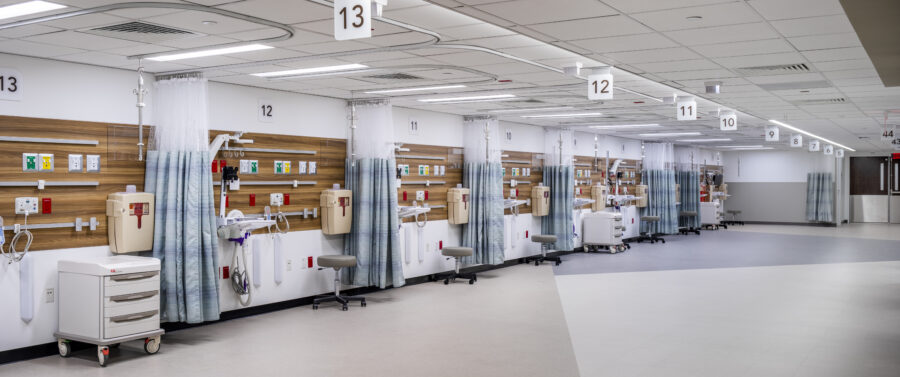
Healthcare systems are increasingly using smart technology to streamline facilities management, improve patient care, achieve better staff experiences, and leverage data to benefit the bottom-line, but the pace of technological advancement can make it difficult to know what new systems will look like in the near or long term, and what physical parameters they will require.
So how can healthcare project teams successfully implement new technologies in a forward-looking way? The answer is paradoxical: start earlier in the development process, long before plans are drawn or shovels hit dirt.
Integrating technology at the conceptual stage helps align a facility’s design with its operational goals. Technology, in this context, is not just an add-on, but a fundamental tool that helps the facility to achieve its goals, drive efficiency, and support long-term functionality. But keeping technology top-of-mind throughout the development process is often easier said than done.
This article explores the key development phases and technology decisions owners and client teams must make at each juncture to ensure seamless integration with the built environment, and easier adaptation of the environment as technology advances.
Phase 1: Strategic Planning—Laying the Foundation
The healthcare project lifecycle begins with strategic planning and ideation, where C-suite leaders and key stakeholders define goals aligned with operational objectives and the long-term vision. This phase integrates visioning work and master plan development to identify opportunities and solutions for ongoing challenges. Active leadership involvement is crucial to ensure alignment with organizational goals, secure resources, and establish a foundation for innovation by addressing operational needs and technology strategies.
A proactive approach in this phase supports the integration of advanced systems like wireless infrastructure and AI-driven analytics, and helps avoid reactive problem-solving later in the project that can lead to change orders and higher costs. For example, patient sensors may not be top-of-mind with healthcare leaders, but failure to plan for and integrate that technology into a project may significantly erode the operations management and patient experience once the space is operational. Neglecting the planning phase can lead to fragmented solutions which create ongoing challenges, increased cost, and reduced functionality.
Phase 2: Pre-Programming—Turning Vision into Action
The pre-programming phase connects strategic goals to actionable plans, laying the foundation for a successful project. It emphasizes operational analysis to support business case modeling. During this phase project parameters are defined with input from key stakeholders, including C-suite and board leaders, planning, design, and construction (PDC) teams, as well as end users like doctors, nurses, patients, support services, and staff.
Technology is key at this stage, as teams identify the range of low voltage and communications technology systems to be included in the project program. These systems can number more than 50 and include critical technologies like electronic medical records (EMRs) that must be integrated. Advanced tools such as RFID tracking, density sensors, logistics management, and predictive analytics should also be considered to align strategic goals with practical solutions. This allows for planning of data collection and analysis to establish a current state baseline for future comparison.
The pre-programming phase balances certainty and exploration. Some decisions, like broad system selection, may already be made, while others, like equipment tracking capabilities or patient flow management, evolve iteratively. Essential at this point of the project is the introduction of a responsibility matrix, like a RACI model, to assign clear accountability and information-sharing. With so many technology systems across departments being weighed at this early stage, project teams need to ensure decisions aren’t made in a silo. The benefits of a responsibility matrix include preventing miscommunication, reducing late-stage adjustments that can drive up costs, and enable a forward-looking approach to systems integration.
The insights from this phase set the stage for what’s to come and provide a framework to refine system requirements. For example, medical equipment generates vast amounts of data, much of which will integrate with EMRs or cloud systems to support predictive analytics. Questions like “Where does this data go?”, “How will it enhance patient care or operational efficiency?”, and “How does it talk to other systems?” highlight the important intersections between technology and strategy.
Phase 3: Programming—Tactical Execution
The programming phase shifts the project from strategy to execution, translating planning outcomes into tailored tactics. It involves PDC leaders, external architecture, engineering, and construction (AEC) vendors, and end users to ensure alignment. As the vision takes shape, this phase introduces ambiguity as assumptions about space, usage, and operations influence the design.
At this point, the team expands to include specialized consultants for advanced technology, such as pneumatic tubing and/or robotics technology, which can connect hospital areas and provide faster transportation of items. The type of system, how it will be integrated in the hospital space, how it will connect with other systems, and how carried items will be tracked all must be considered to ensure the system is optimized prior to construction. These specialized technology systems frequently get deferred or treated generically at this point in the process, which can lead to challenges later down the line.
An important but often overlooked step is a structured responsibility handoff plan. For example, as the pre-programming phase ends, directives like choosing the EMR system guide detailed planning and programming. Key tasks include space and functional programming to align physical layouts with operational workflows.
Budget refinement is another important step of this stage that is often overlooked. This should reflect changing and evolving decisions considerate of target value design, such as in-house servers versus cloud solutions for storing data collected from RFID-enabled systems, which can significantly affect costs.
Also essential in this phase is the on-paper integration of systems such as vertical transportation, pharmacy controls, and access sensors, which should be planned and aligned with overarching goals. Regular milestone reviews and a team that is responsible for reviewing technology decisions before they are final are key to ensuring tactical execution matches the project’s vision.
Neglecting to consider technology and operational needs during the programming phase introduces significant risks to productivity, safety, and budget and can lead to retrofitting those results in 30-50% cost premiums or sacrifices in functionality. For example, tech-enabled mechanical, electrical, and plumbing (MEP) systems are often bid late in the project and create a “day of reckoning” when budgetary assumptions meet actual costs.
Phase 4: Design—Bridging the Gaps
The design phase aligns the overarching strategy with the needs of individual programs, ensuring value-based operational integration. Like the programming phase, PDC leaders and external AEC vendors are key players.
This phase comprises several distinct sub-phases—schematic design, design development, and construction document preparation—each with specific objectives and definitions. These sub-phases collectively translate the vision into actionable plans, bridging strategy with technical and operational needs.
Another consideration in the design phase is how to procure different technology systems, which often hinges on the healthcare system’s purchasing philosophy. Single-source providers offer a more turnkey solution, while a competitive approach can help lower costs and secure advanced technology. Regardless of how technology is procured, the specifics of systems like RFID will heavily influence design specifications. Early commitment to specific systems is important as it will affect spatial planning and downstream processes.
Programming needs, like the number of exam rooms or position of nursing stations, are determined in this phase, and inform the operational workflow in new spaces. Mock-ups and simulation exercises can be used here to help teams visualize and refine how a facility will function, reducing potential misalignment between the design and operational realities.
While vendors are responsible for delivering equipment specifications, they often require signed purchase orders before producing site-specific shop drawings or installation plans, so delays in selecting and ordering critical systems can lead to project delays. Providers and leaders may want to delay equipment decisions until the latest-and-greatest model is released, but that too can hold up the project. Tracking decision timelines and integrating flexibility is key.
Other systems, such as nurse call systems or medical imaging equipment, are often tied to hospital licensing requirements and are thus essential to include for operational planning and integration. The key is to align decisions with project schedules to avoid jeopardizing the overall project timeline.
Phase 5: Pre-Construction and Construction—Transformation to the Built Environment
The pre-construction/construction phase takes the strategic vision into the real-world built environment. During this phase, organizations must make critical decisions regarding how equipment and systems are to be installed, which can affect various aspects of the building. The various MEP systems and equipment all touch different technologies, and lead times for these components must be tracked as delays can disrupt the construction, substantial completion, and AHJ (authorities having jurisdiction) timeline.
In addition, virtual coordination, such as Building Information Modeling (BIM), plays an important role. Early and informed BIM coordination allows teams to identify and resolve potential clashes before construction begins, minimizing time and cost overruns. And as more work is prefabricated off-site, making sure that all software, hardware, and infrastructure elements are aligned is essential for a smooth installation process.
Technology considerations are important in this phase because they ensure the construction process is efficient, cost-effective, and future-flexible. For example, decisions about access control systems or data infrastructure can influence the long-term functionality and adaptability of the built environment. Addressing these elements during the pre-construction phase allows for better flexibility in incorporating new technologies.
The risks of not getting it right or omitting technological planning in this stage can escalate costs, cause delays, or introduce outdated or unnecessary systems and equipment. Failure to make timely technology decisions can also lead to missed opportunities to incorporate new or efficient solutions, thereby placing the building at a disadvantage for future operational efficiency.
Phase 6: Activation—A Shift to Operational Readiness
In this transformative stage, strategy comes to life through implementation. The focus shifts from building to operational readiness, and construction sites are transformed into fully functioning healthcare environments. The technological decisions made during this phase ensure integration of building systems, as well as staff preparation and a focus on achieving the project’s intended outcomes. Participants involved at this stage include PDC leaders, external AEC vendors, and end users, including care givers and staff.
A key tech consideration at this moment is system commissioning, which involves both individual systems commissioning such as HVAC, electrical, plumbing, and healthcare-specific systems as well as technology inter-system commissioning to make sure all function cohesively. Commissioning helps ensure facilities are safe, efficient and able to meet the needs of patients, employees, and visitors. It’s also a critical part of equipment life cycle planning, helping to prevent costly repairs and downtime by verifying all is working as intended.
Technologies such as RFID sensors, destination dispatch elevators, and access control systems must function in unison during this phase. A key step is planning the sequence of operations within these systems to make sure they deliver the intended results. Equally important is implementing a comprehensive orientation and training program for end-users, such as staff transitioning from older systems. Early involvement of end-users in testing not only familiarizes them with the new technologies but also helps identify and address potential “bugs” or workflow mismatches. This helps ensure smoother integration and alerts healthcare leaders when old ways of doing things are inadvertently carried over into the new space.
Getting the technology integration right is key, but planning for future scalability is equally important. Skipping these considerations can lead to disruptions, system failures, and higher costs. The activation phase is also a key time to test redundancy, ensuring systems back each other up and maintain the integrity of hospital operations and data.
If technology fails to align with the overall strategic goals of the project, the overall vision of the project will be misaligned, leading to modifications post-activation, which can take operations offline and cost significant dollars in downtime.
Phase 7: Stable Occupancy—A Smooth Transition to Fully Functional
The stable occupancy phase focuses on optimizing a healthcare facility’s operations and ensuring a smooth transition from the construction phase to fully functional, day-to-day operations. It emphasizes helping staff shift from project-related activities to concentrating on their specific roles, ensuring the facility meets business case goals like expected number of patients per day.
A key aspect of this phase is the integration and fine-tuning of technology systems that were implemented during the construction and activation phases. This is particularly important for technologies that are complex, such as specialized medical equipment or advanced security systems, which often introduce the most significant challenges.
One of the main challenges faced during this phase is having the right resources available post-occupancy. For example, when selecting a building automation system (BAS) provider, it is important to negotiate adequate post-opening support, ensuring that a technician is available for a specified number of hours each week to address any operational issues that arise. Additionally, considering the number and complexity of technologies within the facility, leaders need support to re-evaluate systems and processes based on real-world feedback.
The benefits of addressing technological considerations during stable occupancy include systems that are working together smoothly and can prevent future operational disruptions. If the technology is properly implemented and tested, it can lead to increased efficiency, reduced downtime, and improved patient care. On the other hand, skipping or omitting technological considerations here can lead to systems that aren’t properly integrated or maintained, are not aligned, and the facility could experience ongoing issues with system downtime or failures.
Technology cannot get lost in the project shuffle, as it is a critical driver of patient care and operational efficiency. To ensure successful outcomes of a project, technology must remain central to every phase but is especially critical to be integrated in the early phases of a project. Doing so will prevent costly retrofits and will ensure that systems work in harmony. In the end, this approach not only meets today’s needs, but also will better position the healthcare facility for future needs and advancements.
Connect with the authors of this article:
Eric Hoffman, Vice President, National Healthcare Sector Lead
Doug King, Vice President, Healthcare Sector
Liz Page, Project Director
Beyond Surviving August: Building Better Student Housing Through Systematic Review
Student housing development operates on a unique annual rhythm that sets it apart from traditional multifamily projects. Each year, the industry collectively holds its breath as August deliveries determine whether...
